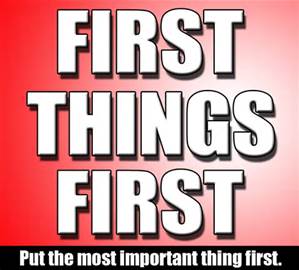We’re not talking about whether they’re getting married. We’re writing about how involved they are in their work. A recent column by Anita Bruzzese in USA Today, which was also reprinted in the Green Bay Press-Gazette, struck a chord with us and, in our opinion, relates to marketing yourself and your business.
One of the more intriguing items in the column was that a Gallup survey found that 70% of workers are not engaged or actively engaged at work.
The piece delves into the concept that a large percentage of people have a job just to pay the bills and would rather be doing something else. Think about your employees for a minute. They may be doing an excellent job, in your opinion, but deep down they’re thinking about what they would rather be doing. Heck, they may already be doing it and hoping for a big break so they can leave you behind.
Bruzzese writes about Tama Kieves, an attorney who quit her legal practice to pursue her passion as a writer. A friend “got her thinking: If she was so good at something she didn’t like, imagine the success she might have doing something she loved.” It took some time, but eventually a publisher made Kieves an offer for her book, speaking, and coaching opportunities. The law career became an item on her resume.
If you ask your employees whether they are satisfied with and challenged by their work, what are the odds you’ll get a straight, honest answer? They will, in their own mind, at first question why you’re asking. Then they will wonder whether they should tell you what you want to hear or the truth. Keep in mind, they may be one and the same.
Ask about their hobbies and what they like to do with their free time. You may discover a latent talent you can encourage and, in turn, nurture their love of a paycheck from your company. You may also discover a true passion that may lead to an eventual departure from your company. Think of the option that incorporates their passion into your business model; it may be a whole new line of products or services you never thought of.
The gist of Bruzzese’s column, in relation to your employees and marketing your business, is that you must find ways to ensure they are engaged with what they’re doing. We have often seen excellent sales people get promoted to sales manager and wind up failing miserably. They are good at selling face-to-face with customers or prospects, but lack the drive to effectively engage with other sales people. They’d rather be out on the street instead of pushing people, and paper, around.
Perhaps it should be part of your hiring process to determine what your candidates are most excited about and if they are passionate about coming to work for your company or if they like the wage and benefits package. Where do they feel they could make the greatest contribution to the corporate mission? Your challenge, obviously, is getting the right fit and sustaining the engagement and the resulting productivity.
There may also be a time when it’s worth spending a few minutes (perhaps an hour or two) to reflect on where you are as well. Bruzzese’s column cites some points at the end from Kieves that stimulate such self-reflection.
When you think about that 70% ratio from the Gallup survey, it’s easy to understand why so many workers are not engaged. Teenagers working in fast food restaurants are only there for a paycheck and because they were unable to find any other employment. You may find a rare case where they aspire to management, but their career path usually leads in other directions. Take that out to virtually any industry or business and chances are the percentage of 70% disengagement holds true.
Since they’re now no longer with us, I can admit that I hated mowing my grandparents’ lawn. I would do virtually whatever I could to find an excuse or disable the lawn mower to get out of the job. Ever wonder how many accidents at work happen because the employee is unhappy and wants to do something else? There are professionals who can help you ensure that you do everything possible to engage your employees.
Next week we’ll spend some time on the impact social media can have on your business.




